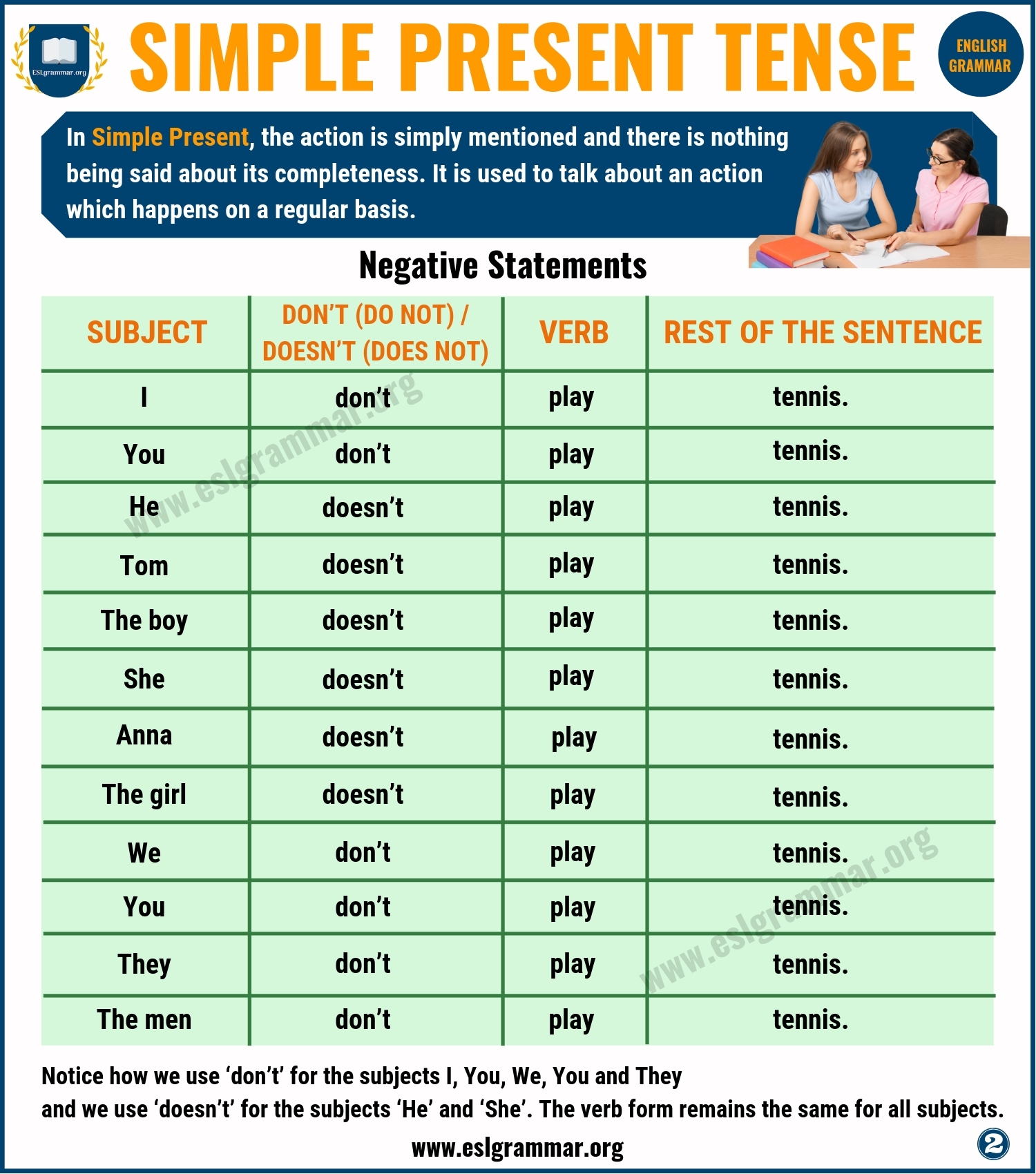The present simple tense is one of the most commonly used verb tenses in the English language. It is used to describe actions that happen regularly, habits, general truths, and scheduled events. Understanding how to use the present simple tense is essential for effective communication in English.
Many English learners find the present simple tense easy to grasp because of its straightforward structure. However, mastering the nuances of this tense can take time and practice. By learning how to correctly use the present simple tense, you can improve your language skills and communicate more effectively in English.
Present Simple Definition
The present simple tense is used to talk about general truths, habits, routines, and scheduled events. It is formed by using the base form of the verb, with the addition of ‘-s’ or ‘-es’ for third person singular subjects. For example, “She works in a bank” or “They play tennis every Sunday.”
One of the key features of the present simple tense is that it does not change regardless of the subject. This means that the verb remains the same for all subjects, except for third person singular where ‘-s’ or ‘-es’ is added. This makes it easier to remember and use in everyday conversations.
Using the present simple tense correctly can help you convey information clearly and accurately. It is important to pay attention to the subject-verb agreement and the correct form of the verb when using the present simple tense. With practice, you can become more comfortable and confident in using this tense in your conversations and writing.
Overall, the present simple tense is an essential part of English grammar that is used in various contexts. By understanding its definition and how to use it correctly, you can enhance your language skills and communicate effectively in English. Practice using the present simple tense in your everyday conversations to improve your fluency and accuracy in the language.
In conclusion, the present simple tense is a fundamental aspect of English grammar that is used to describe habits, routines, general truths, and scheduled events. By mastering the rules and structures of the present simple tense, you can improve your language skills and communicate more effectively in English.
